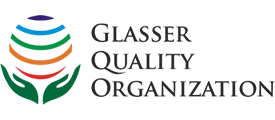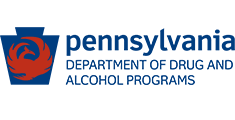The signs, symptoms, and effects of depression can be different for every person impacted. Learning about depression is one of the first steps towards getting better.
Understanding Depression
Learn about depression
Virtually everyone will experience moments of sadness, frustration, and even despair from time to time. Though unpleasant, these emotions can be healthy and productive responses to difficult situations. However, when emotions such as these persist for an extended period of time, or occur with such regularity and/or severity that an individual’s ability to function is compromised, then he or she may be experiencing a depressive disorder. In many cases, individuals who develop depressive disorders attempt to self-medicate or numb themselves to their psychological pain by abusing alcohol or other drugs. This unhealthy decision can lead to myriad negative outcomes, including a worsening of the depressive symptoms and the possible onset of a substance use disorder.
The category of depressive disorders includes a variety of disorders that are characterized by feelings of sadness, emptiness, and/or irritability that are accompanied by disruptive cognitive and somatic changes. Four of the more common types of depressive disorders are major depressive disorder, persistent depressive disorder, premenstrual dysphoric disorder, and substance/medication-induced depressive disorder:
Major depressive disorder: Individuals who experience five or more of the following symptoms for most of the day nearly every day during a discrete two-week period, and who experience significant distress or functional impairment due to these symptoms, may meet the criteria for major depressive disorder:
- Depressed mood
- Markedly diminished interest or pleasure in all or most activities
- Significant change in appetite or unintentional change in weight
- Hypersomnia or insomnia
- Psychomotor retardation or agitation
- Fatigue or loss of energy
- Feeling of worthlessness and/or excessive or inappropriate guilt
- Indecisiveness or diminished ability to think or concentrate
- Recurrent thoughts of death, suicidal ideation, planning for suicide, or attempting suicide
Persistent depressive disorder: With the publication of the fifth edition of the Diagnostic and Statistical Manual of Mental Disorders (DSM-5), symptoms that were previously attributed to chronic major depressive disorder and dysthymic disorder were consolidated into persistent depressive disorder. The criteria for a diagnosis of persistent depressive disorder includes depressed mood for most of the day, for more days than not, for at least two years, plus at least two of the following symptoms:
- Sense of hopelessness
- Poor self-esteem
- Overeating or poor appetite
- Disrupted sleep patterns, including insomnia or hypersomnia
- Fatigue or low energy
- Poor concentration and/or problems making decisions
During the two-year period that the individual experiences these symptoms, an individual who has persistent depressive disorder will not be asymptomatic for more than two months.
Premenstrual dysphoric disorder: The essential features of this type of depressive disorder are repeated occurrences of mood lability, dysphoria, anxiety symptoms, and irritability during the premenstrual phase of a woman’s menstrual cycle. Symptoms of premenstrual dysphoric disorder will abate during or shortly after the onset of menses. For a diagnosis of premenstrual dysphoric disorder, an individual must experience five of the following symptoms, including at least one from each group:
Group 1
- Mood swings or increased sensitivity to rejection
- Increased irritability or anger
- Depression, hopelessness, and self-deprecating thoughts
- Anxiety, tension, and/or feelings of being on edge
Group 2
- Decreased interest in usual activities
- Problems with concentration
- Lethargy, fatigue, or significant lack of energy
- Significant change in appetite, including overeating or specific food cravings
- Disrupted sleep patterns, including hypersomnia or insomnia
- Feeling of being overwhelmed
- Breast tenderness or swelling, joint or muscle pain, weight gain, and other physical symptoms
A diagnosis of premenstrual dysphoric disorder also requires that the individual has experienced these symptoms during most of her menstrual cycles over the previous 12 months.
Substance/medication-induced depressive disorder: A diagnosis of this type of depressive disorder is contingent upon the following criteria:
- An individual experiences prominent and persistent depressed mood or significantly diminished interest and/or pleasure in all or almost all activities.
- Evidence exists that these symptoms occur during or soon after substance intoxication or withdrawal, and the substance in question is capable of producing these symptoms.
- The disturbed mood is not better explained by a non-substance-related depressive disorder.
- The disturbance does not occur exclusively during delirium, and the disturbance causes significant stress or impairment in important areas of functioning.
Depressive disorders can cause significant psychological pain, and can have a profoundly negative impact on an individual’s life. However, depressive disorders are treatable conditions. With proper professional care, individuals who have developed major depressive disorder, persistent depressive disorder, premenstrual dysphoric disorder, or substance/medication-induced depressive disorder can overcome their distressing symptoms and live much happier and healthier lives.
Statistics
Depression statistics
According to the National Alliance on Mental Illness (NAMI), major depression affects about 14.8 million adults in the United States, or about 6.7% of individuals ages 18 and above. The National Institute of Mental Health (NIMH) reports that depression among adults is most common in the 18-25 age group, followed by the 26-49 age group, and then the 50-and-above age group. Depressive disorders are more common among adult women than among adult men; for example, the 12-month prevalence of a major depressive episode is 8.1% among adult women in the United States and about 5.1% among adult men.
Causes and Risk Factors
Causes and risk factors for depression
The development of a depressive disorder may be influenced by a variety of causes and risk factors, often acting in concert. The following are among the more common influences that can determine whether or not a person develops a depressive disorder:
Genetic: Depression appears to have a strong genetic component. According to the American Psychiatric Association (APA), the risk of developing major depressive disorder is as much as 400% higher among individuals whose parents or siblings have this disorder.
Environmental: Adverse childhood experiences and stressful life events are among the most common environmental influences on the development of a depressive disorder, especially when an individual has a history of multiple, diverse types of these experiences and events.
Risk Factors:
- Gender (depression is more common among women)
- Age (depression is more common within the 18-29 age group)
- Negative affectivity
- Family history of depression
- Loss of parent through separation, divorce, or death
- Substance abuse
- Trauma
Signs and Symptoms
Signs and symptoms of depression
The appearance of a depressive disorder will vary depending upon a number of factors, including the type of the depressive disorder and the history of the afflicted individual. The following are among the more common signs that may indicate that a person is struggling with a depressive disorder:
Behavioral symptoms:
- Tearfulness
- Angry outbursts
- Drop in academic or occupational performance
- Jitteriness
- Slowed speech and/or decrease in volume, amount, and inflection
- Neglect of pleasurable avocations
Physical symptoms:
- Fatigue
- Insomnia
- Hypersomnia
- Change in appetite
- Change in weight
- Headaches and stomachaches
Cognitive symptoms:
- Difficulty focusing
- Difficulty concentrating
- Indecisiveness
- Racing thoughts
- Slowed thoughts
- Distractibility
Psychosocial symptoms:
- Irritability
- Withdrawal
- Sadness, shame, and guilt
- Suicidal ideation
Effects
Effects of depression
Untreated depressive disorders can cause a number of negative outcomes in a person’s life, including the following:
- Substance abuse and substance use disorder
- Sleep disorders
- Diminished academic performance, failure, and expulsion
- Diminished occupational performance, job loss, and unemployment
- Family discord
- Strained or ruined interpersonal relationships
- Dangerous, reckless, and risky behaviors
- Withdrawal and isolation
- Self-harm
- Suicidal ideation
- Suicide attempts
Co-Occurring Disorders
Depression and co-occurring disorders
Individuals who develop a depressive disorder may be at increased risk for also experiencing the following co-occurring mental health disorders:
- Anxiety disorders
- Eating disorders
- Substance use disorder
- Obsessive-compulsive disorder (OCD)
- Posttraumatic stress disorder (PTSD)







